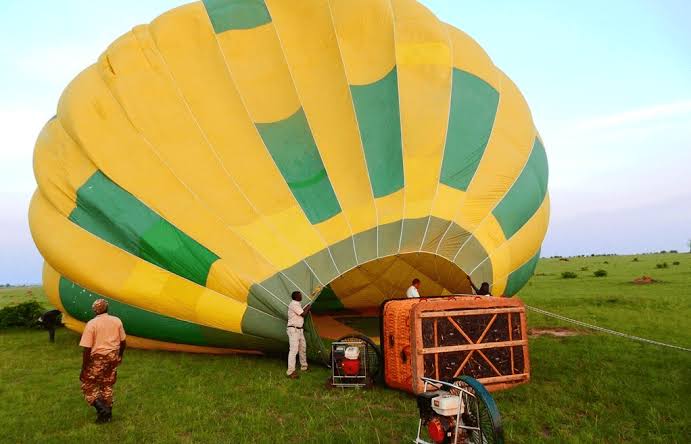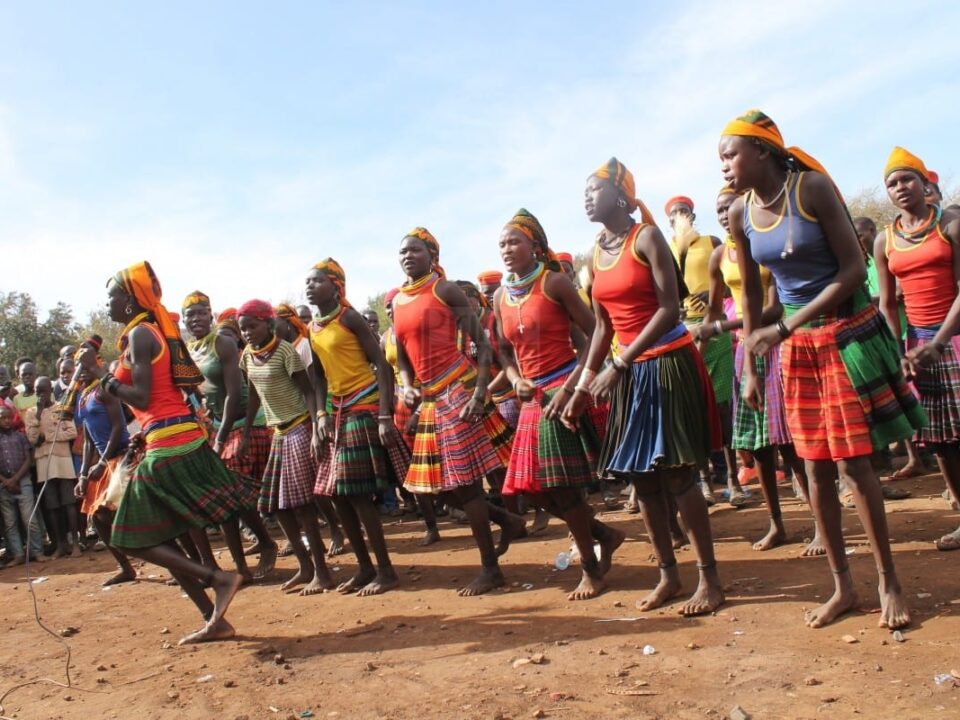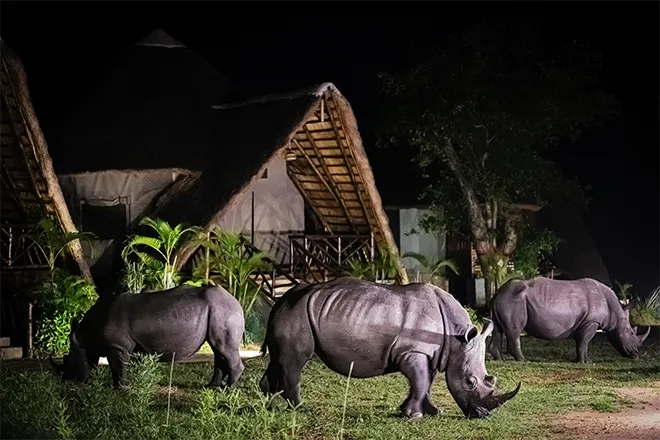- GET IN TOUCH WITH US:
- +256 753518160
- +256 777842166
- info@experiyatourcompany.com

What’s the best time of year for wildlife photography in Kenya?
November 20, 2025
What camera gear should I bring for a Kenya safari?
November 20, 2025How Do I Photograph the Great Migration Safely?
Photographing the Great Migration is one of the most exhilarating experiences a wildlife photographer can pursue. Stretching across the Serengeti–Mara ecosystem, this monumental movement of over 1.5 million wildebeest, hundreds of thousands of zebras, and numerous antelopes is a spectacle of life, survival, and raw wilderness drama. The thunder of hooves, the clouds of dust rising from the plains, the explosive energy at river crossings, the close presence of predators—everything about the Great Migration feels larger than life. Yet, with all its beauty and intensity, it is equally important to approach the experience with caution, respect, and a deep sense of safety. Many travellers ask: How do I photograph the Great Migration safely?
Safety in migration photography isn’t just about personal protection; it includes safeguarding wildlife, preserving natural behaviour, and avoiding risky situations that could endanger both humans and animals. This blog offers a comprehensive, detailed look at how to capture powerful migration images without compromising safety, ethics, or the integrity of the environment.
Understanding the Migration: Why Safety Matters
The Great Migration is unpredictable. The movement of herds depends on rainfall, grazing patterns, and instinctive behaviour. River crossings—especially those at the Mara River—are dramatic, chaotic, and extremely dangerous to both wildlife and humans if precautions are not followed. Wildebeest panic easily, predators lurk nearby, crocodiles lie hidden beneath the water, and unpredictable stampedes can occur at any moment.
For photographers, getting that perfect shot means being close enough to witness the action yet far enough to stay safe. This balance requires knowledge, responsible guiding, and respect for the environment. Trying to approach too closely, interfering with the herds, or rushing into risky positions can lead to accidents and disrupt natural behaviour.
The best migration photographers prioritize ethical, patient, and safe techniques over forced proximity.
Travel with Experienced Guides
The single most important safety element when photographing the migration is having an experienced, highly trained guide who knows the river crossing points, animal behaviour patterns, migration timing, and safe viewing distances. A professional guide:
Reads the body language of wildebeest Recognizes signs of an imminent crossing Knows where vehicles should be positioned Avoids blocking herd movement Understands predator presence and potential risks Helps photographers get the best angles without compromising safety Guides know the terrain intimately and can predict where sudden surges might occur. Crossing points are often steep, muddy, or slippery, and guides help manoeuvre vehicles to secure ground.
Never attempt to visit migration hotspots without a guide; the rivers are powerful, the conditions unpredictable, and the herds can panic suddenly.
Maintain a Safe Distance at All Times
Photographers sometimes get tempted to move closer for dramatic shots. But approaching too closely can:
Startle the herd Trigger panic blocks Disrupt natural crossing patterns Force wildebeest to dangerous jump points Create unsafe conditions for both humans and wildlife Crossing sites should always be approached from a distance that allows animals to behave naturally. Do not approach the river banks on foot. Vehicles should stay in designated areas and avoid blocking potential exit or entry paths.
Remember that safety distance also protects you from predators hiding in nearby bushes, waiting for weak or injured animals. Lions, leopards, and hyenas often ambush at crossing points.
Give the wildlife space. The migration is powerful enough without needing to be dangerously close.
Choose the Right Angle and Position Early
When photographing a river crossing, patience is key. Herds often gather, retreat, circle around, hesitate, and try again. This behaviour can go on for hours. Photographers must position themselves early to secure a good angle without moving too often or disturbing the animals.
Ideal positioning includes:
Placing yourself slightly upstream or downstream from the main flow Avoiding frontline positions directly where the herd will land Choosing stable ground with no risk of collapsing embankments Avoiding corners where vehicles can get stuck Working with your guide to identify safe vantage points Good angles allow photographers to capture:
The mass movement of herds Animals leaping into the river Dust clouds formed by hooves Predators awaiting the crossing Crocodiles surfacing beneath the chaos Positioning early ensures safety, minimizes disturbance, and increases the likelihood of excellent photography.
 Avoid Excessive Noise and Sudden Movements
Avoid Excessive Noise and Sudden Movements
Silence is essential during migration photography, particularly near river crossings. Excessive noise—like shouting, clapping, loud engines, or slamming doors—can disrupt wildlife behaviour. Sudden human disturbances may cause herds to scatter or abandon crossing attempts entirely.
To photograph safely:
Keep conversations low and calm Avoid rapid movements inside the vehicle Follow the guide’s instructions while changing position Keep camera gear organized to minimize fumbling Wildlife stress levels during crossings are high, and ethical photographers prioritize calm, quiet environments that allow nature to unfold uninterrupted.
Stay Inside the Vehicle
During migration season, the Maasai Mara and Serengeti have strict regulations regarding stepping out of vehicles. Getting out near river crossings is extremely dangerous. Reasons include:
Crocodiles lurking at the water’s edge Lions hidden in tall grass Rampaging wildebeest herds Unsteady riverbank soil Vehicles provide safety, stability, and controlled movement. Standing or sitting through the roof hatch or open sides offers excellent photographic perspectives while maintaining safety.
Never attempt to photograph the migration from the ground unless you’re in a designated walking area far from crossing points and accompanied by an armed ranger.
Use Zoom Lenses to Capture Close-Up Action
Telephoto lenses are essential for safe migration photography. They allow you to capture intense action without the need to physically move closer.
Recommended lenses include:
70–200mm for portraits and mid-range action 100–400mm for dynamic movement 500–600mm for long-distance wildlife behaviour 24–70mm for wide landscape shots with herds in the foreground Using zoom lenses keeps photographers safely inside vehicles and far from danger zones. They also help frame scenes creatively, whether zooming into crocodile strikes or pulling back to capture massive herd movements.
Be Aware of Predators and Other Hazards
Migration hotspots attract predators:
Crocodiles wait beneath the water Lions and cheetahs stalk the fringes Hyenas follow injured animals Leopard hide in trees near river exits Each of these scenarios presents both photographic opportunities and safety concerns.
Additionally, photographers must watch for:
Uneven terrain Steep riverbanks Swift water currents Unpredictable wildebeest stampedes Vehicles getting stuck in mud Guides are trained to identify and avoid these hazards, but photographers must remain alert and follow instructions at all times.
Respect Wildlife and Ethical Guidelines
Ethical photography is central to safety. Disrupting wildlife behaviour for a photograph is never acceptable.
Ethical guidelines include:
Never blocking animal paths Never chasing wildlife Never pressuring herds to cross Respecting designated vehicle zones Keeping drones grounded where prohibited Avoiding flash photography near nervous herds Ethical behaviour ensures the safety of wildlife and protects the integrity of the natural experience.
Be Prepared for the Environment
Migration photography requires physical readiness and patience.
Photographers should prepare for:
Long hours in vehicles Dusty conditions Sudden temperature changes The possibility of rain High heat exposure in afternoons Always bring:
Light breathable clothing Sunscreen Hats Extra batteries Memory cards Weatherproof camera bags Snacks and water Staying comfortable ensures you remain focused and alert for those unpredictable, spectacular moments.
Trust the Process and Be Patient
Migration crossings are not guaranteed. Sometimes herds gather but refuse to cross. Sometimes crossings occur suddenly without warning. Photography requires patience—waiting for hours, observing behaviour, and trusting your guide’s instincts.
The best images often come to those who wait quietly, remain alert, and understand that nature follows its own rhythm.
Book Your Great Migration Photography Safari with Experiya Tour Company
For travellers who want a safe, expertly guided, and photography-focused Great Migration experience, Experiya Tour Company offers tailored safaris designed for photographers of all levels. Their experienced guides know the migration patterns, safe vantage points, and best lighting conditions, ensuring that every moment is captured safely and beautifully. Whether you aim to photograph dramatic river crossings or intimate wildlife portraits, Experiya crafts each safari with attention to detail, safety, and unforgettable photographic opportunities. When planning your Great Migration photography safari, trust Experiya Tour Company to deliver a seamless, secure, and inspired journey.




